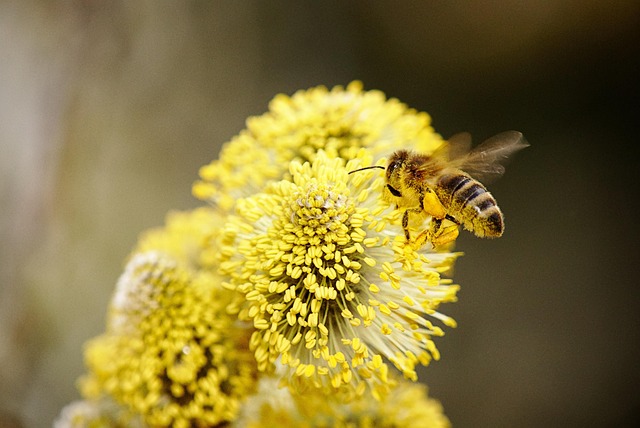Psocids thrive in moist, dark environments and are drawn to organic materials. Effective residential psocid treatment involves monitoring humidity (60%-80%), addressing moisture issues, regular cleaning, and maintaining a dry home to prevent infestations. Key steps include identifying leaks, using dehumidifiers, vacuuming thoroughly, and fixing entry points for better control.
Psocids, also known as book lice, are tiny insects that can quickly multiply and infest homes. This article provides expert advice on tackling psocid infestations by focusing on reducing humidity and eliminating other favorable conditions these pests thrive in. We’ll explore strategies for both residential psocid treatment and prevention, covering topics like understanding psocid behavior, identifying ideal habitats, implementing effective treatments, and maintaining a psocid-unfriendly environment to keep your home pest-free.
Understanding Psocids: Their Habitat and Behavior
Psocids, often referred to as book lice or bark lice, are tiny insects that thrive in moist and dark environments. They are elusive creatures, preferring to stay hidden in crevices, behind walls, under floorboards, or within furniture. These pests are particularly drawn to organic materials like wood, fabric, paper, and even natural fibers in carpets and upholstery. Understanding their habitat is crucial for implementing effective residential psocid treatment strategies.
Psocids have a lifecycle similar to other insects, with eggs, nymphs, and adults. They multiply quickly in ideal conditions, making early detection vital. While they do not bite or transmit diseases, their presence can indicate underlying moisture issues in homes. Moisture is a primary factor attracting psocids, so addressing humidity levels and sealing entry points are essential steps in residential psocid treatment.
Identifying Humidity Levels and Other Favorable Conditions
Identifying Humidity Levels and Other Favorable Conditions
In the quest for effective residential psocid treatment, understanding humidity levels is paramount. Psocids thrive in environments with high moisture content, typically between 60% to 80% relative humidity. They are attracted to dark, moist areas where they can feed on organic materials like wood, fabric, and paper. Homeowners should use hygrometers to monitor humidity levels, especially in areas prone to moisture buildup such as basements, attics, and bathrooms.
Other psocid-friendly conditions include temperature extremes and limited ventilation. These insects prefer warm temperatures, usually between 70°F to 85°F (21°C to 29°C), and poor air circulation allows them to stay in one place and breed undisturbed. Regularly inspecting these areas for signs of infestation and addressing any moisture or temperature issues is crucial in preventing and mitigating psocid infestations during residential treatment.
Implementing Effective Residential Psocid Treatment Strategies
Implementing effective residential psocid treatment strategies is key to eliminating these tiny invaders and restoring your home’s comfort. The first step involves identifying and addressing moisture issues, as psocids thrive in humid environments. Regularly inspect your home for leaks, high humidity areas, or poorly ventilated spaces, and take prompt action to fix them. Consider using dehumidifiers to reduce indoor humidity levels, especially in basements or bathrooms.
Additionally, a thorough clean is essential. Vacuuming regularly helps remove psocid eggs and adults from floors, carpets, and furniture. Pay close attention to corners, cracks, and crevices where these insects like to hide. After vacuuming, dispose of the bag immediately to prevent any escape back into your home. Regular dusting with a damp cloth can also help eliminate egg cases and reduce their overall presence.
Preventive Measures: Maintaining a Psocid-Unfriendly Environment
To prevent psocids from taking over your home, it’s crucial to maintain an environment that isn’t conducive to their growth and survival. Start by addressing moisture issues—psocids are attracted to humid spaces, so keeping your home dry is essential for residential psocid treatment. Regularly inspect and repair any leaks in your plumbing or roofing systems, and ensure proper ventilation in areas prone to high humidity, such as bathrooms and kitchens.
In addition, maintaining a clean and clutter-free environment is key. Psocids thrive in dark, secluded spaces where they can feed on organic materials. Decluttering your home, especially in corners and crevices, makes it harder for them to find hiding places. Regularly vacuum and wipe down surfaces to remove any food particles or debris that could attract psocids. As part of your residential psocid treatment, consider using desiccant products or specific anti-psocid treatments in areas where these pests are frequently found to further deter their presence.
By understanding psocids’ habitat and behavior, identifying favorable conditions like humidity, and implementing effective residential psocid treatment strategies, you can significantly reduce their presence. Preventive measures, such as maintaining a dry environment and eliminating clutter, are crucial to fostering a psocid-unfriendly living space. Adopting these steps ensures a comfortable and pest-free home for all residents. For comprehensive guidance on residential psocid treatment, consult experts in the field.
